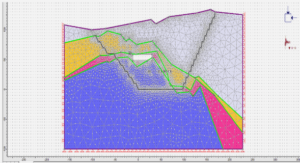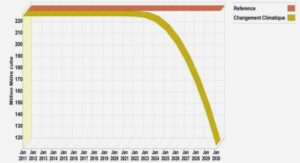Composites are advanced materials made mostly of a matrix and some reinforcements; however, additives and fillers are sometimes essential elements of their formulation, depending on the targeted application [7–9]. Each component used in the composite formulation aims at achieving a specific goal. The matrices are generally responsible for the application’s shape, while the reinforcements provide the required improvement of its mechanical properties. In addition to the composites’ mechanical properties, an improvement of certain properties required by the applications is provided by the additives such as fire retardants [10–12] and coupling agents [13–16]. Those additives are then selected based on both the intended applications and the available matrix-reinforcements. Contrary to both the reinforcements and the additives, fillers do not provide any specific strength to the final composite material; however, they contribute to the reduction of the volume of certain key composite elements while maintaining its critical characteristics. In the light of this information, one can conclude that a filler plays a more economical rather than a technical role. In fact, they significantly increase the composite material’s profitability as they lower its final cost [17–19].
he notion of composites is quite broad and unrestricted to any given industrial sector. In fact, composite materials are formulated with different kind of materials and applicable in a wide range of sectors such as the plastic industry, metallurgy and civil engineering [8,20]. In this regard, metal matrix composites and concrete matrix composites are respectively found in metallurgical and civil engineering, while thermoplastic or thermoset matrices are found in the plastic industry. In different cases, a particular composite’s component can be used to achieve different objectives depending on the application. Such is the case for iron which is both used as a matrix for metal matrix composites and as a reinforcement in reinforced concrete [21–23]. This work focuses on the plastic industry where most of the reinforcements are either man-made fibers such as glass, carbon, Aramid like Kevlar or natural fibers from vegetal, animal and mineral origins [11,24–31].
The composite material’s formulation with vegetal fibers
The reinforcing ability of vegetal fibers
Numerous applications of composite materials reinforced with vegetal or lignocellulosic fibers have been reported in the literature and newer avenues and applications are still being explored around the world through many active and intensive research programs. A wide variety of vegetal fibers have been investigated which include banana [32], hemp [33–36], flax [34,37], kenaf [17,38], jute [39], cotton [40], starch [41] and cellulose [42].Although they stem from different sources, vegetal fibers have a common structure . They are made of different elements such as microfibers, microfilaments and incrusting substances which differ from each other based on their chemical compositions and their functions. In general, microfibers and microfilaments are each held together by the incrusting substances which then act as adhesives. In general, vegetal fibers are comparable to composite materials whose reinforcements are microfibers and microfilaments and which can be characterized by either their physical appearance or by their chemical structure.
Non-cellulosic materials of vegetal fibers, also known as incrusting substances include lignin, hemicelluloses and pectin. Contrary to cellulose, non-cellulosic do not show a regular chemical structure. Hemicelluloses for example are carbohydrate macromolecular chains containing different sugar rings, while lignin which is generally responsible for the rigidity of wood is made of poly-substituted phenolic compounds. Moreover, lignin has a much higher molecular weight than hemicelluloses. Pectins are polysaccharides linked to calcium ions. The degree of polymerization of non-cellulosic matters of vegetal fibers lies between 50 and 500 units [29,42]; moreover, they are hydro-soluble and amorphous due to their inability to show a regular repetitive pattern.
The properties of vegetal fiber-reinforced composites are directly impacted by the chemical and structural differences between cellulose and the incrusting substances. Cellulose has been shown to be an efficient reinforcement contrary to the incrusting substances which hinder an optimal fiber dispersion into the matrix [34], in addition to bearing some structural flaws and defects which eventually grow into the composite mechanical failure. Moreover, incrusting substances exhibit lower onset of thermal degradation which negatively affect natural fiber by lowering their onset of their thermal degradation (Td) to about 190°C. Consequently, most of the actually reported vegetal fiber-reinforced composites have been formulated with lower melting thermoplastics matrices to avoid fiber thermo-degradation in the presence of high temperature melting thermoplastics as their melting points (Tm) are normally higher than 200°C.
There is a great similitude between vegetal fibers and composite materials, as explained in the previous sections. In fact, cellulose plays the role of reinforcement while the incrusting substances are either the matrix or the adhesives [17,29,42]. It is also possible either to decrease the mechanical strength of vegetal fibers by causing different post-harvesting defects to the fibers and microfibers or to increase it by altering their structure to lower their incrusting substances’ content. Any method of complete or partial extraction of the incrusting substances would potentially improve on the reinforcing properties of vegetal fibers, especially with higher temperature melting thermoplastic materials.
The plastic matrix
The matrix, which is either a thermoplastic or a thermoset depending on its processing/synthesis method, is the second important constituent of composite materials. Thermoplastics are synthesized polymers that can be re-melted and cooled repeatedly during their life cycle. Such re-melting and cooling however have a negative impact on their mechanical properties as their chain lengths are gradually shortened by the process. There are unlimited possibilities to the applications of thermoplastics, both because they are not restricted in the plastic processing methods and because they do not have a limited shelf-life
In the contrary, thermosets undergo polymerization during processing from their precursors and the resulting polymers cannot be re-melted after curing. This implies that the process cycle for thermosets is much longer because of the many stages involved, in addition to the limited shelf-life of their precursors. The concept of melting point is only theoretical for thermosets because of their inability for re-melting. Thermosets degrade at a given point when their temperature is increased (before the theoretical melting point). They are most suited for applications requiring a high thermal resistance; however, they are more restricted by their processing methods, processing cycles and the limited shelflife of their precursors [21,22].
CHAPTER: 1 INTRODUCTION |




